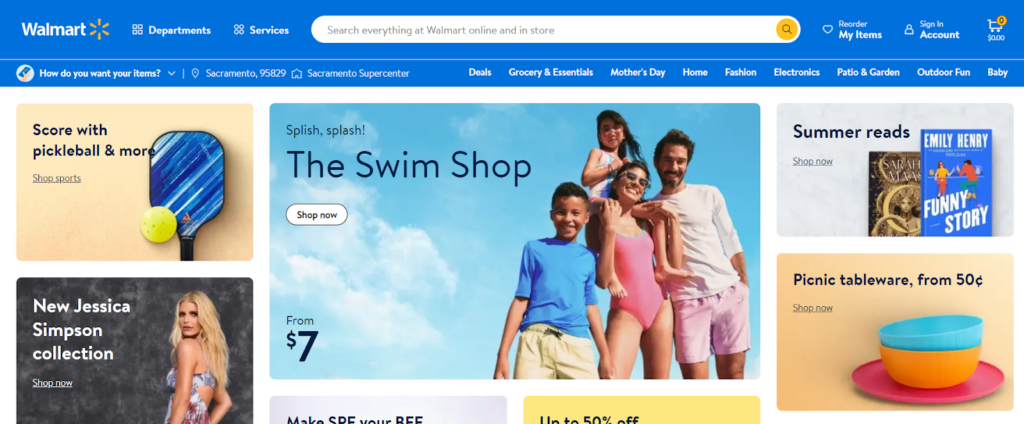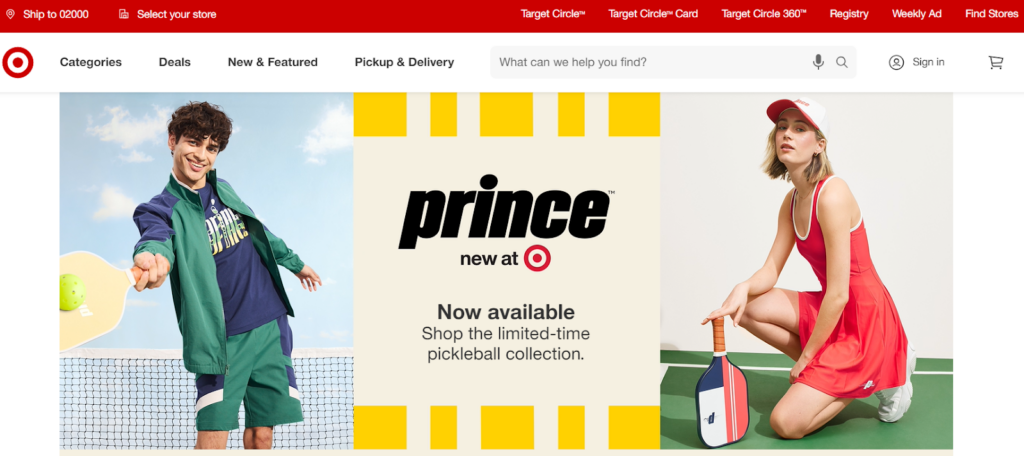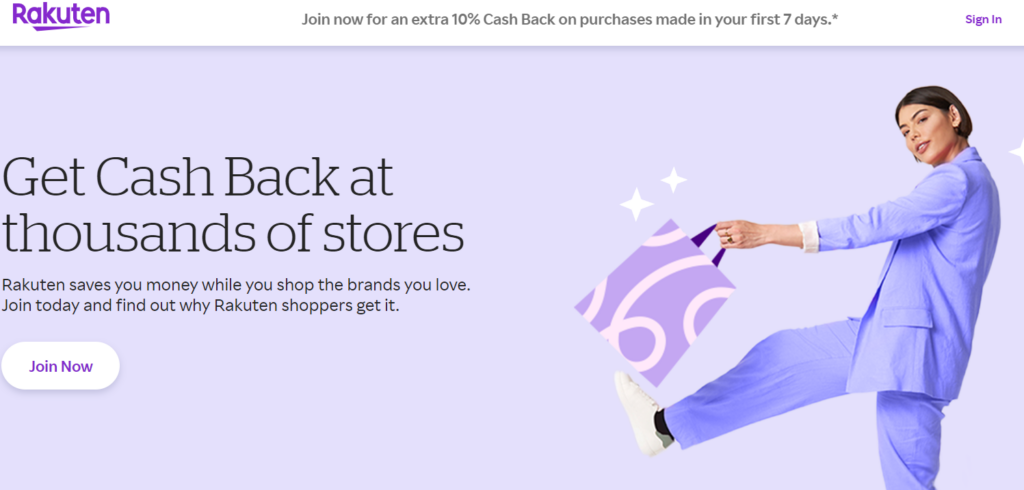Ecommerce continues booming as consumers embrace online shopping’s convenience. And an effective website is important as it acts as your digital storefront.
A well-designed ecommerce website must optimize the user experience, build trust, and drive sales through intuitive navigation, compelling product displays, and smooth checkout.
In this article, we’ll share with you the components of an ecommerce website, design examples that you can use as inspiration, and design strategies.
Components of an Effective Ecommerce Website
Now that we’ve discussed the types of ecommerce models let’s tackle the components of an effective ecommerce website.
User-Friendly Design
Nobody likes a complicated website. A successful ecommerce site needs to be easy to navigate, making it simple for users to find what they’re looking for without any fuss. Clear visual cues draw the eye toward desired actions.
Product Display and Descriptions
Clear, crisp images and detailed descriptions help bridge the gap between shopping at a store and shopping online. They let customers know exactly what they’re buying.
Comprehensive product details reduce uncertainties and returns, and having different views showcases the item from multiple perspectives.
Search Functionality
A powerful search tool can make all the difference in ecommerce. It should allow customers to filter results in a way that’s helpful to them—be it by price, category, or brand.
As users type, the search anticipates their query with relevant suggestions. Advanced filters let shoppers quickly narrow down choices based on their preferences.
Shopping Cart and Checkout Process
A smooth, straightforward checkout process keeps frustration low and conversion rates high. Nobody wants to jump through hoops just to make a purchase.
First-time buyers appreciate a guest checkout option. Placing step indicators provides transparency during the multi-page checkout flow.
Mobile Compatibility
With more people shopping on their mobile phones, your ecommerce site must perform well on these devices. This means fast loading times, responsive design, and accessible features.
Big tap targets and swipe gestures adapt to smaller screens to help enable mobile digital wallets with one-tap checkouts.
Security Features
Secure transactions are a must to protect customers’ personal and financial information. Features like SSL certificates and encryption have become standard fare.
Trust badges visibly confirm the site’s security standards, and placing advanced fraud monitoring guards customers against malicious activities.
Top Ecommerce Website Examples
Here’s a list of some of the best ecommerce websites that you can visit online. You can draw inspiration from their design and implement it in your own online store.
1. Amazon

Source: https://www.amazon.com/
The first website example is Amazon. Amazon is the largest online retailer in the world, known for its vast product selection and innovations such as Prime membership, which offers benefits like free shipping and streaming services.
- Focus of the platform: Broad range of products, including books, electronics, apparel, and groceries.
- Target audience: Wide-ranging, aiming to cater to virtually every demographic with its diverse product offerings.
- Type of platform: Primarily a Business-to-Consumer (B2C) platform with expanding avenues in Business-to-Business (B2B).
2. eBay

Source: https://www.ebay.com/
eBay started as a pioneer in the online auction industry and has evolved into a marketplace for both new and used goods.
- Focus of the platform: Auction-style sales and direct sales for a wide variety of products, including electronics, collectibles, and fashion.
- Target audience: Consumers looking for deals, unique items, collectibles, and second-hand goods.
- Type of platform: Consumer-to-Consumer (C2C) with significant elements of Business-to-Consumer (B2C).
3. Walmart

Source: https://walmart.com/
Originally a powerhouse in brick-and-mortar retail, Walmart has extensively expanded its online presence to compete directly with Amazon.
- Focus of the platform: A large selection of consumer goods, from groceries and apparel to electronics and home essentials.
- Target audience: Broad consumer base, particularly value-conscious families and individuals looking for convenience and low prices.
- Type of platform: Business-to-Consumer (B2C).
4. Alibaba

Source: https://www.alibaba.com/
A leading ecommerce company in China, Alibaba operates various online platforms and is renowned for its global wholesale and retail online markets.
- Focus of the platform: Large-scale wholesale and retail for various goods, including raw materials, electronics, apparel, and accessories.
- Target audience: Businesses and consumers worldwide that are looking to purchase bulk and varied products.
- Type of platform: Business-to-Business (B2B) and Business-to-Consumer (B2C).
5. Taobao

Source: https://world.taobao.com/
Part of the Alibaba Group, Taobao is a Chinese online shopping website similar to eBay and Amazon. It offers numerous types of products at competitive prices.
- Focus of the platform: Consumer goods with a strong focus on lower prices.
- Target audience: Primarily, consumers in China are looking for deals and a wide selection of consumer products.
- Type of platform: Consumer-to-Consumer (C2C) and Business-to-Consumer (B2C).
6. Etsy

Source: https://www.etsy.com/
Etsy is known for its focus on handmade, vintage, and unique goods, supporting independent creators and small businesses.
- Focus of the platform: Usually handmade or vintage items and arts and crafts supplies.
- Target audience: Consumers looking for unique, handcrafted, or personalized products, often with an interest in supporting small businesses and artisans.
- Type of platform: Consumer-to-Consumer (C2C) and Business-to-Consumer (B2C).
7. Target

Source: https://www.target.com/
A major retailer in the United States, Target offers a diverse range of goods online, complementing its strong network of physical stores.
- Focus of the platform: General merchandise, including clothing, electronics, home decor, and groceries.
- Target audience: Families and individuals seeking stylish, quality goods at competitive prices.
- Type of platform: Business-to-Consumer (B2C).
8. Flipkart

Source: https://www.flipkart.com/
Flipkart is one of India’s leading ecommerce platforms. Similar to Amazon, it offers a broad spectrum of products.
- Focus of the platform: Electronics, home appliances, fashion, and lifestyle products.
- Target audience: Primarily Indian consumers looking for a variety of goods at competitive prices.
- Type of platform: Business-to-Consumer (B2C).
9. Rakuten

Source: https://www.rakuten.com/
Based in Japan, Rakuten operates as a ‘cash back’ shopping portal and also runs a broad-based ecommerce platform.
- Focus of the platform: To offer diverse product categories with added incentives through cash back and points.
- Target audience: Consumers looking for extra value through cash back, rewards, and comprehensive product offerings.
- Type of platform: Business-to-Consumer (B2C).
10. JD

Source: https://global.jd.com/
A major competitor to Alibaba in China, JD.com is known for its direct sales model and high-quality service, including fast delivery.
- Focus of the platform: Electronics, home appliances, and general merchandise.
- Target audience: Chinese consumers looking for quality products and reliable delivery.
- Type of platform: Business-to-Consumer (B2C).
Tips for Developing an Effective Ecommerce Website
Below are some essential tips to help you develop a website for your ecommerce business: best ecommerce website
Optimize Product Pages for Conversion
Each product page on your website is an opportunity to convert a visitor into a customer. Ensure that these pages are well-designed, featuring high-quality images and detailed descriptions. Include clear, persuasive calls-to-action (CTAs) that guide users through the buying process.
Leverage Search Engine Optimization (SEO)
Use SEO best practices to increase the visibility of your e-commerce site. This involves optimizing your content with targeted keywords, improving site speed, and ensuring that your website is mobile-friendly. Proper SEO helps your site rank higher in search engine results, making it easier for potential customers to find you.
Incorporate Interactive Elements
Interactive elements can improve the user experience on your ecommerce site. Consider adding features like zoom-in capabilities on product images, 360-degree views, and interactive videos. These tools help customers get a better feel for your products, which can reduce hesitation and prompt purchasing decisions.
Refine Design Elements
The overall design of your ecommerce website should be attractive and user-friendly. Pay attention to the layout, color schemes, and typography. Design elements should not only be aesthetically pleasing but also functional, guiding users seamlessly from browsing to purchasing.
Streamline the Navigation
Ensure that your website navigation is intuitive and straightforward. A well-structured menu with clear categories makes it easy for customers to find what they’re looking for. Simplified navigation also supports better SEO outcomes by helping search engines index your pages efficiently.
Ecommerce Website Development With LeftLane Media
If you have a project and want to get started with LeftLane Media, fill out their quote form.
You can also contact them by dialing 714-676-9253 or visiting their office located at 3040 Saturn St #205, Brea, CA 92821.
FAQs Regarding Ecommerce Website Examples
What are some common features of successful ecommerce stores?
Successful online stores typically offer user-friendly navigation, detailed product descriptions with high-quality images, secure payment options, and responsive customer service.
How do I choose the right ecommerce website example for benchmarking my online store?
Look for ecommerce websites that target a similar audience and sell products in the same category as yours to get relevant insights and strategies for your online business.
Can small businesses compete with major ecommerce platforms?
Absolutely! Small businesses can compete by focusing on niche markets, offering personalized services, and utilizing strong community engagement strategies to build loyalty and brand value.
What are the key features to consider for a great ecommerce website design?
When designing your ecommerce store, focus on web design that enhances user experience and functionality. A great ecommerce website should be visually appealing, easy to navigate, and optimized for performance across all devices.
